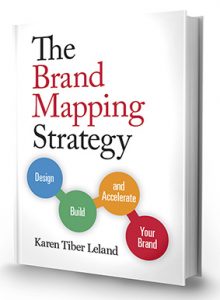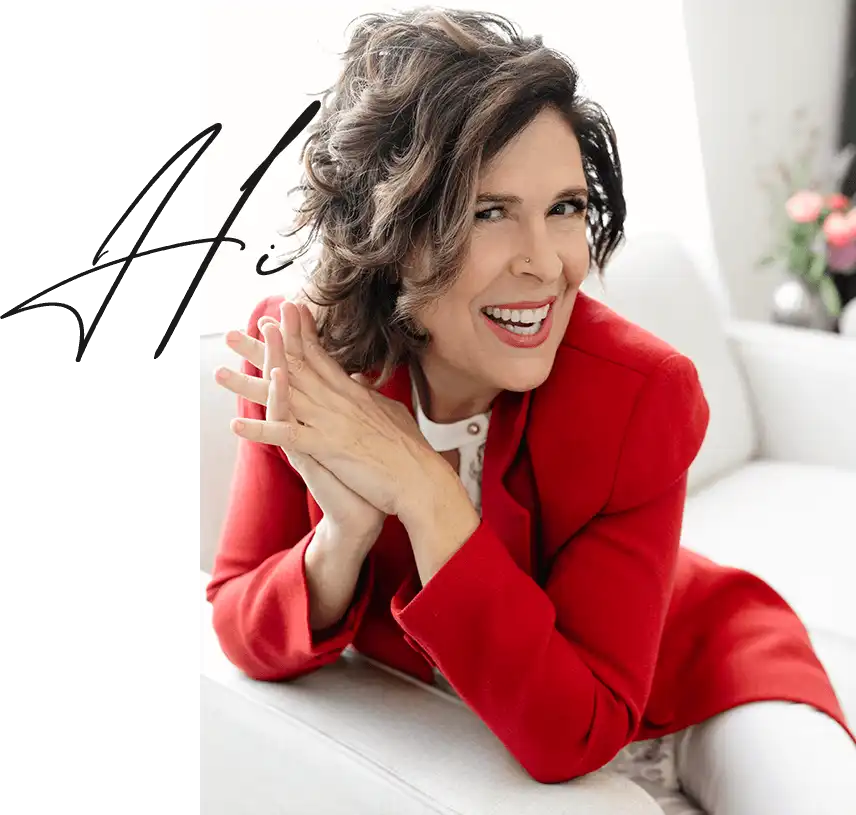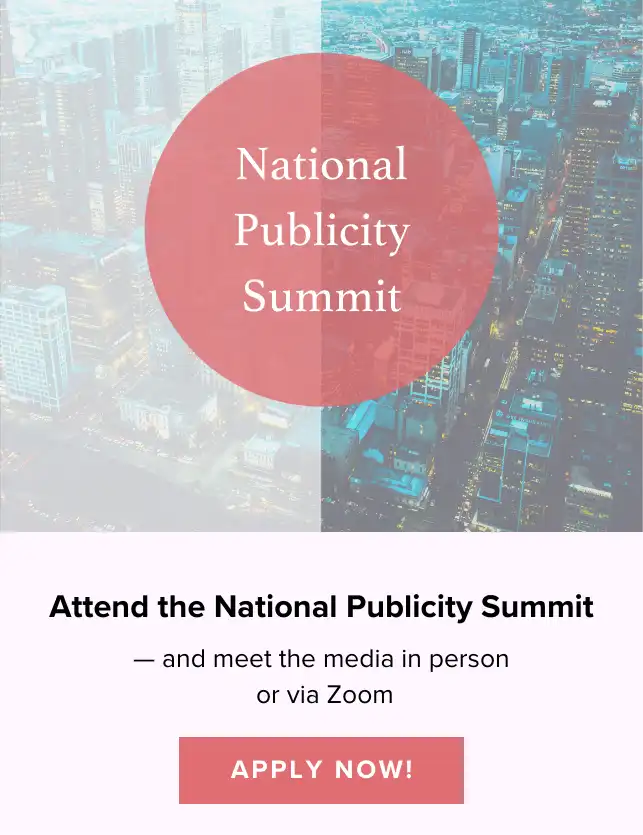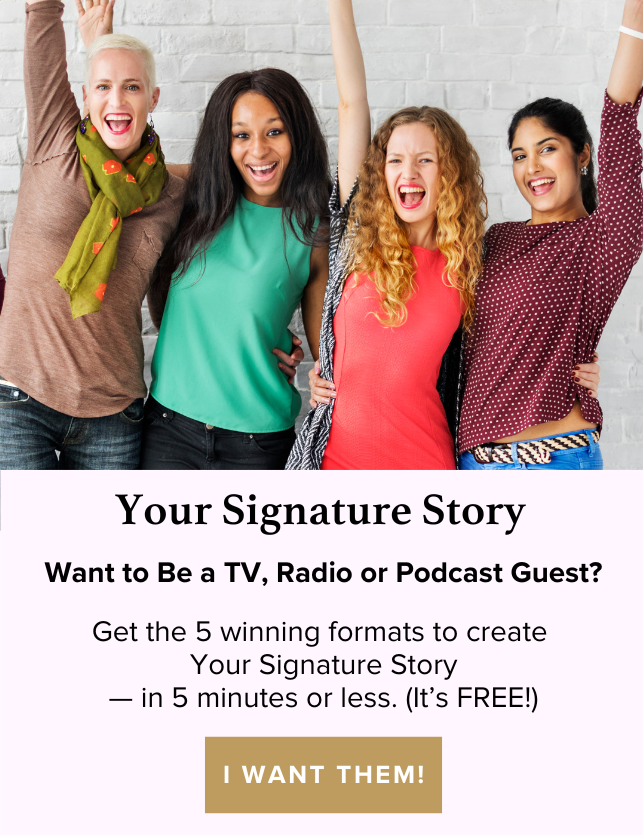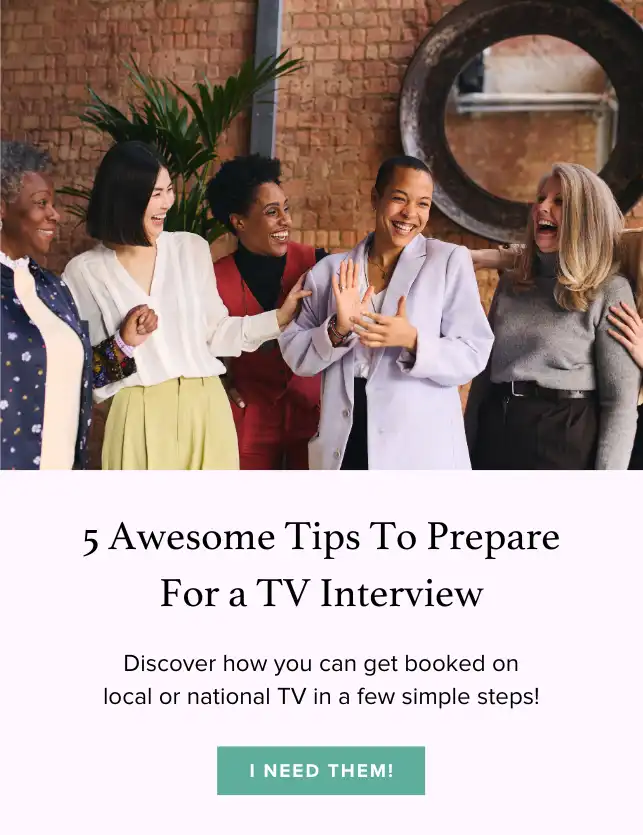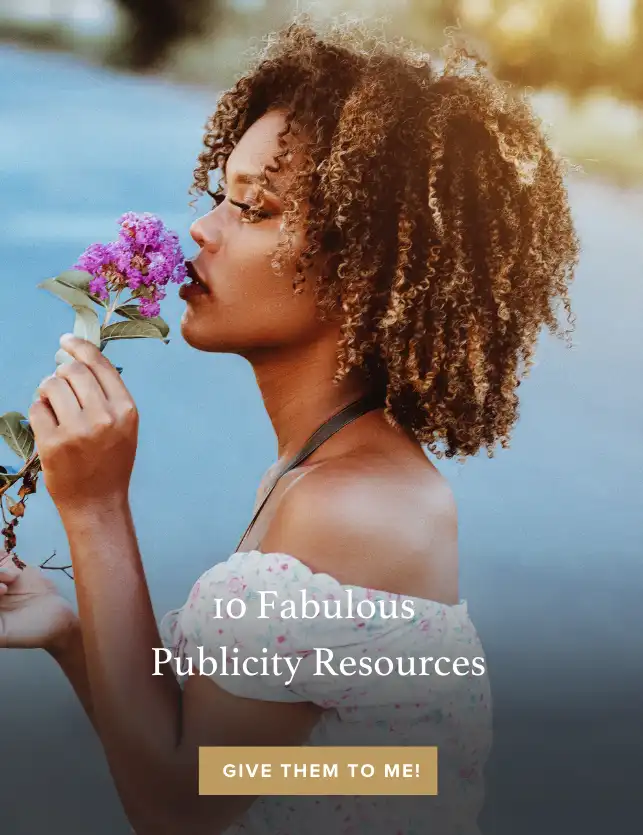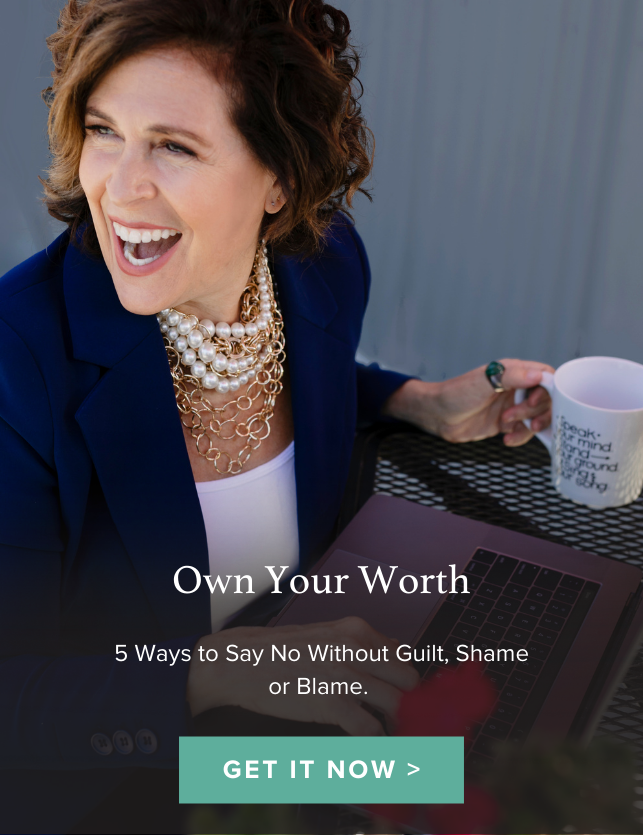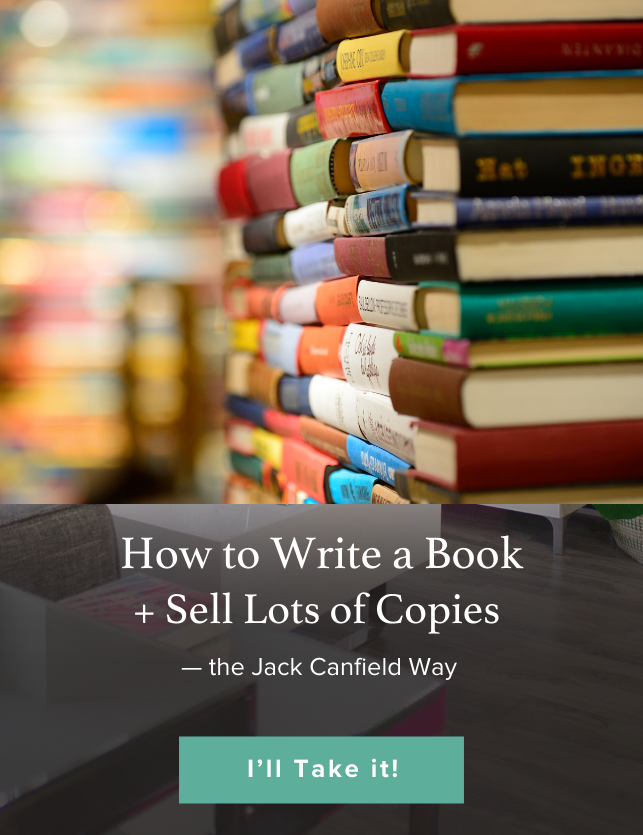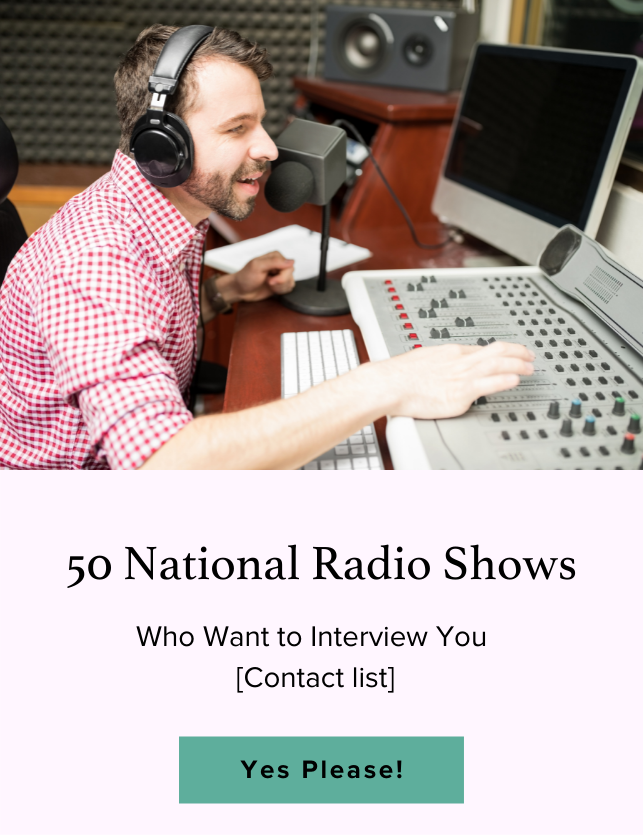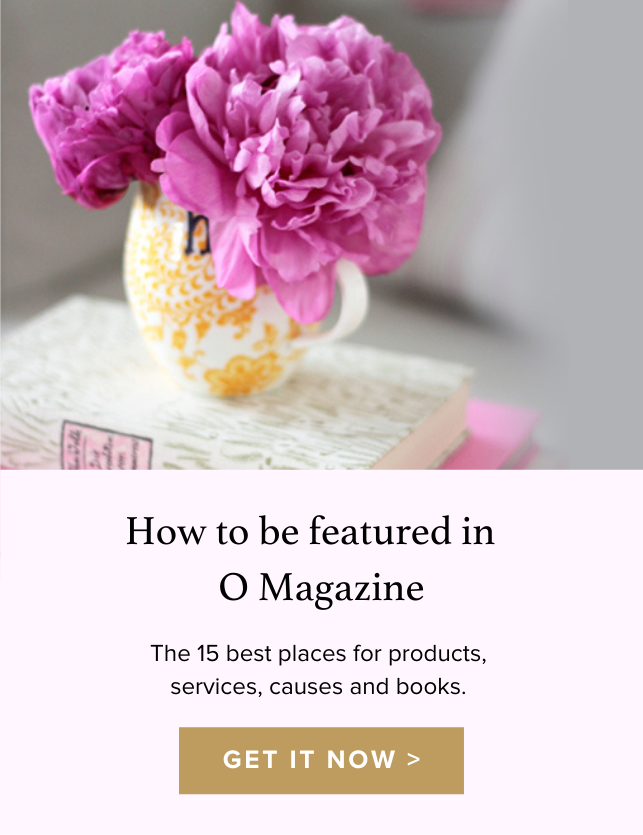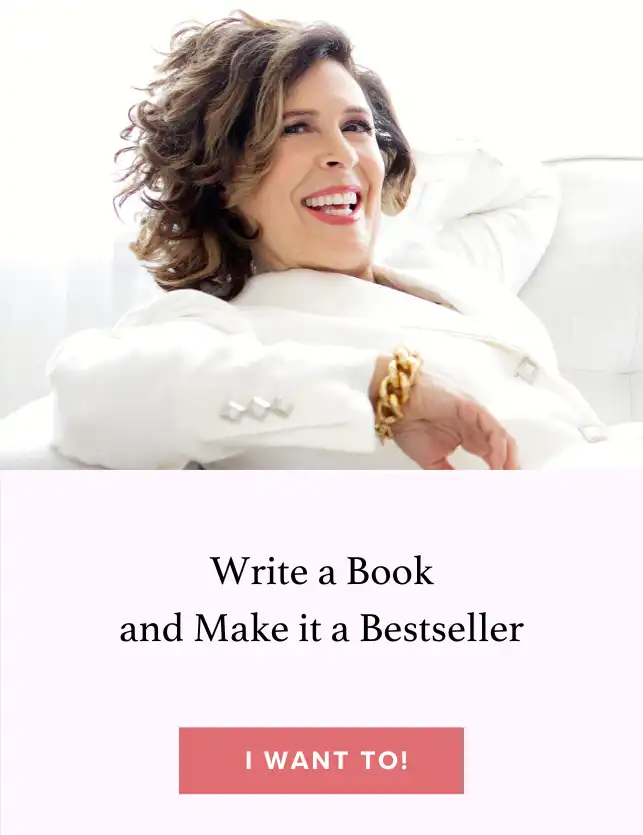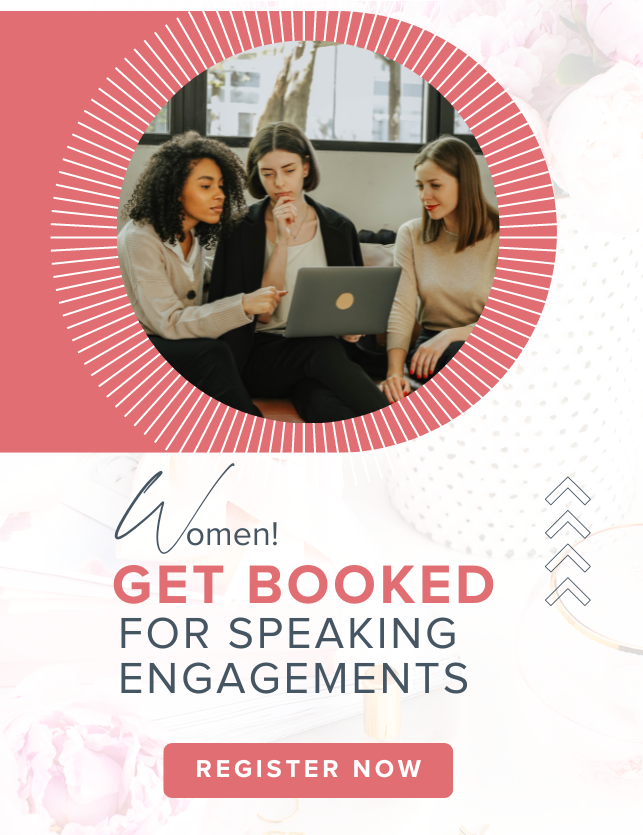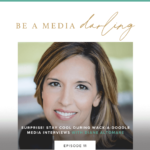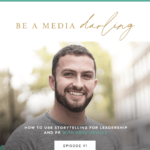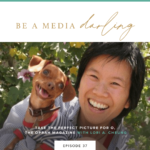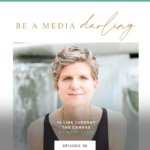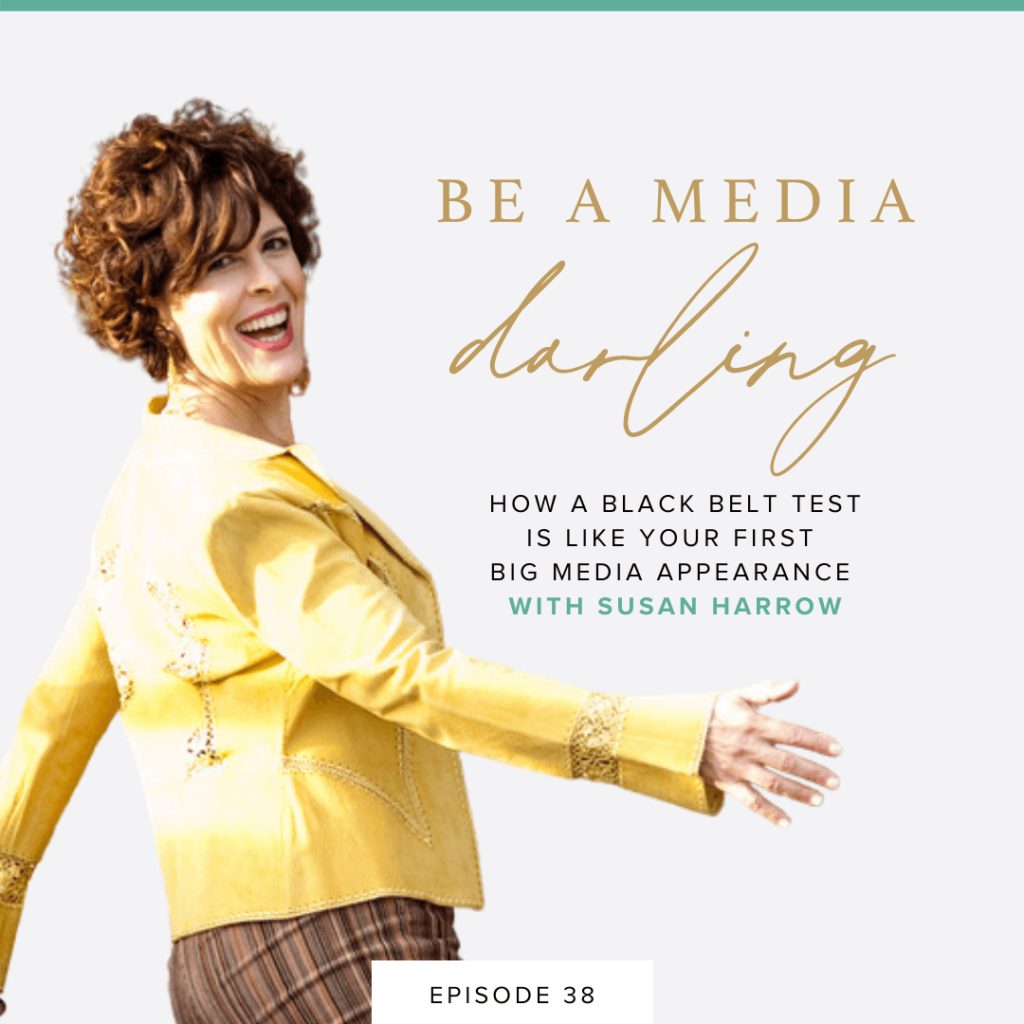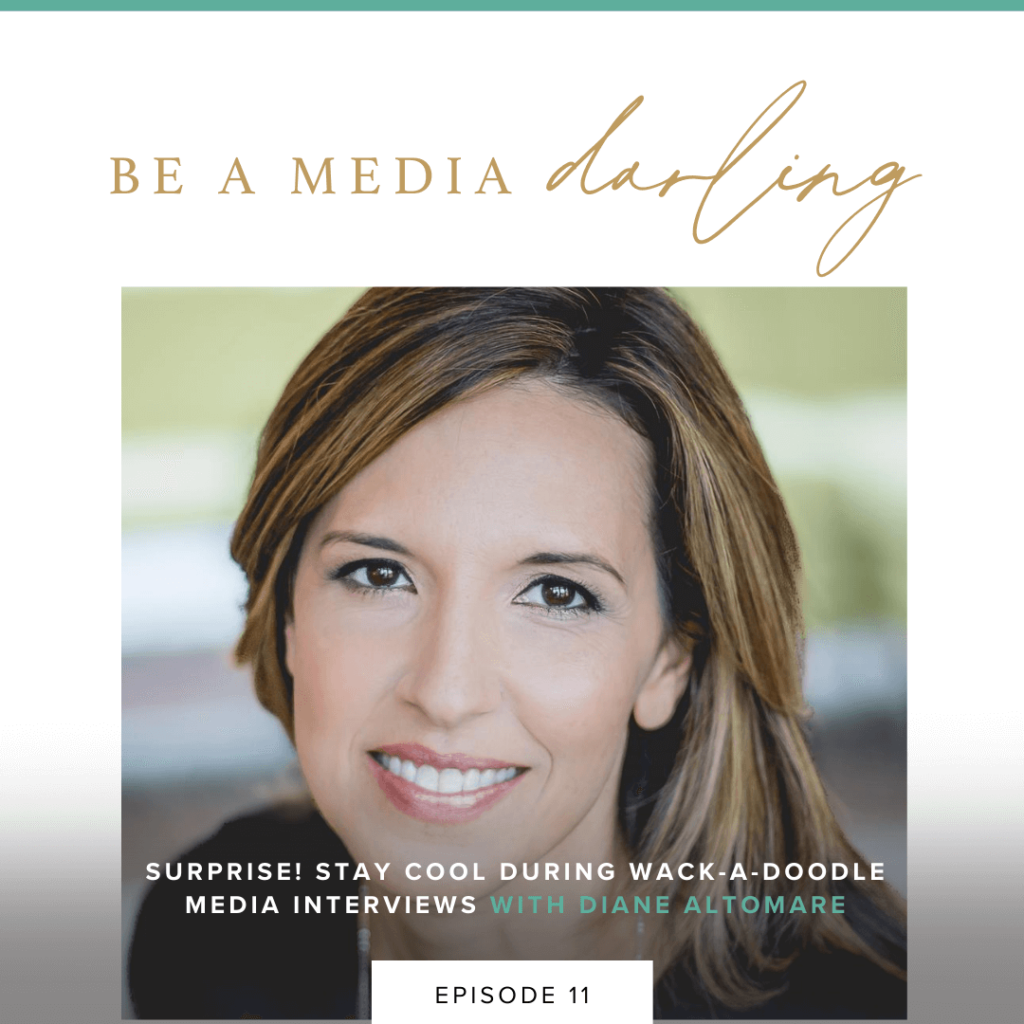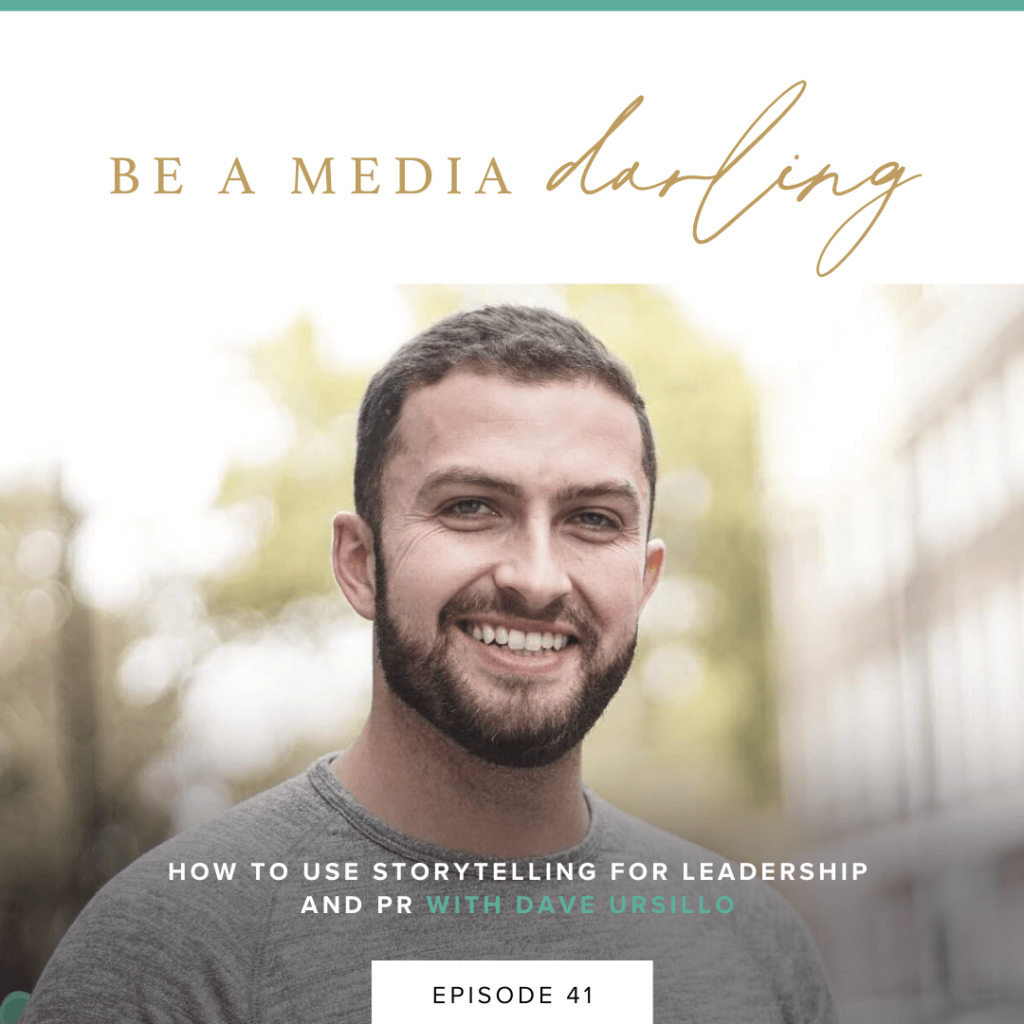5 Ways Your Branding Can Get The Media To Call You With Karen Leland
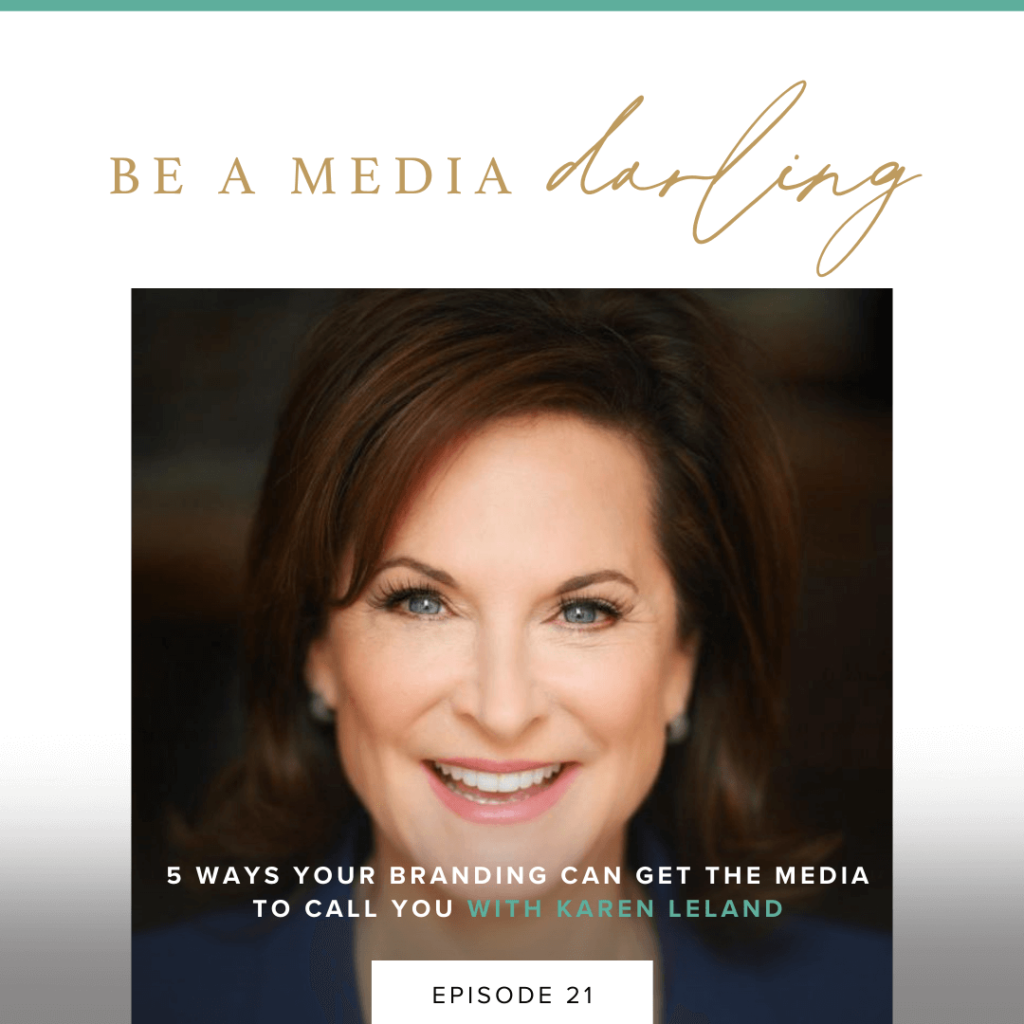
Are you enjoying the Podcast? Then I invite you to hop on over to iTunes to subscribe, rate + review it. Here’s a quick video on how to do a podcast review on iTunes. (It’s simple if you follow these directions). Note: It can take up to 24 hours to show up on my Podcast. You’re welcome to send this to anyone you think it would delight. May good fortune always follow you!
Want to know how to subscribe on your phone? Watch this video.
Want to be a guest on my Podcast? Jet me an email with your topic and a link to your bio here.
Send Susan a Voice Message!
Click below to send me your voice message with a question or topic you’d like to hear more about in my upcoming podcasts! I will answer the most pressing and popular ones in a future episode. (I’ll mention your first name ONLY to protect your privacy.)
5 Ways Your Branding Can Get The Media To Call You With Karen Leland
Welcome everyone to the Be a Media Darling Podcast, today our topic is five ways your branding can get the media to call you. Our wonderful guest is a dear friend of mine, Karen Leland. She’s CEO of Sterling Marketing Group, which is a branding and marketing strategy and implementation firm, helping CEOs, businesses and teams develop stronger personal and business brands. Her most recent book, is The Brand Mapping Strategy, Design, Build and Accelerate Your Brand. To reach her, go to SterlingMarketingGroup.com.
You’re doing a TED Talk too. Did you already do your TED Talk?
I haven’t. Actually, I’m doing a TEDxTalk at Yale in October actually.
That’s fantastic. Obviously, the topic is branding?
The topic is actually of that whole Yale TEDxTalk, the theme is the gap. I’m going to talk about the gap between how people experience themselves and how their brand is sometimes represented in the world.
That will be a great place to start. There’s a lot of definitions of a brand. That you are the brand. Maybe we could start with what your definition of a brand is and why people should have one.
It’s funny because in the book, one of the things that I say is I tell people I’m going to play fast and loose with language because I use the word branding, and the word marketing, and the word PR, and the word social media, and the world business development. Not that they’re all the same thing, but they’re so inextricably linked in today’s world that they’re really different facets of a diamond.
Branding in general, I like the definition Jeff Bezos gives about a brand is what someone says about you when you’re not in the room. I really think a brand, whether it’s personal or business, is it’s your reputation. It’s how you are seen, it’s how you are viewed. It’s what people think of when they think of you.
That reason that I say that PR and social media and all of that is intertwined is that today, there are no just pure branding activities or pure marketing activities or pure PR activities. They all have a linkage and a relationship with each other.
We’re really talking about perception is reality and how all of those things still need to be consistent. Your social media can’t look cutesy and wild if your website looks serious and buttoned up – that won’t get the media to call you.
Exactly. The thing is that, the brand of your website and your collateral materials really need to match what the tone of your brand is, either your personal brand or your business brand, depending on which one you’re designing collateral materials for. So many people have websites and collateral material that is just counter to their brands.
For example, I have people call me sometimes and they’ll go, “I use chartreuse in website design because my web designer said chartreuse is a really hot color this year.” Or somebody said to me the other day, “I used pink because I like the color pink.” That doesn’t mean that pink is the right color for her brand. As a matter of fact, for this person, pink was completely the wrong color.
People tend to think about designing their brand identity based on how they feel or what’s popular rather than based on what’s consistent tonally and energetically even with the particular brand that they have, either personally or business.

Get the media to call you by matching your brand to what you do for a living. This includes color choices, fonts, and language.
What should they start with? Let’s imagine somebody loves that color pink but it’s not matching what they do for a living or what they want to promote or they’re offering.
What they want to communicate, what they’re feeling they’re trying to communicate. Again, we’re talking about color. Color is only one aspect. There are fonts, there’s design, there’s language. There are all these other aspects of how you represent your brand. Color is an interesting one because there’s a whole psychology to color. Colors will communicate to someone very, very different things depending on the color.
I think the place for people to start, it’s the reason, Susan, I really wrote The Brand Mapping Strategy book, the reason that I wrote it is that I think people need to start with defining their brands in some very specific ways. Let me give you an example that I use or an analogy that I use. I wear glasses. I know a lot of people wear glasses.
When you go to the eye doctor, you sit there and you’re reading the eye chart and the eye doctor will put this big, heavy, gigantic thing on your face and he or she will click a bunch of different lenses. They’ll ask you, “Does this lens make it clearer or fuzzier? Can you see the letters clearer or fuzzier?”
The brand is like that. There are seven different aspects to your brand that have to be clear, not fuzzy and for you to understand and be able to articulate those seven aspects of your brand before you should be doing any brand design and before you should be even doing any brand building and putting it out there.
What happens is, people start putting it out there and building buzz for their brand but they drive people back to a website or to social media or to an online blog that is not representative fully of the brand. Then they lose people. There’s no conversion.
What are those seven things?
Of course, they are in the book.
Of course.
Of course.
It’s fully explained.
Absolutely. I’ll give them to you very briefly. The first one is what I call the anchor statement. That’s the go to statement about who you are. A lot of people call it the elevator pitch. It’s the very quick, who you are, go to description.
It’s not a tag line.
No. It’s literally like when you’re at a cocktail party and someone says what do you do, it’s the one or two sentence answer you give.
I must say, “I double or triple entrepreneurs’ business using sound bites properly in their media appearances.”
Exactly. By the way, the thing that the anchor statement has to do is it has to be … People’s brains look for patterns. It has to be a pattern they can recognize. We’ve all said to people at a cocktail party or a conference, “What do you do?” They talk and we’re like, in our minds thinking, “I’ve got no idea what this person does.” We are totally lost.
As obvious as that sounds, a lot of people can’t actually answer that question in an effective, timely, impactful way. It sounds easy but it’s not necessarily. It has to be something people, as I said, can fit into a pattern.
For me, I say, just what you said at the beginning of this. I’m a branding and marketing strategist and implementer. I work with executives, CEOs, business people on improving their business and personal brands. Everyone can get that. It’s understandable. That’s the anchor statement.
The other thing is the unique branding proposition. We always talk about, in business, unique selling propositions. It’s the same idea applied to the brand. What is it about what you do or how you do it that makes you unique, distinct, special? What sets you apart? I don’t mean by that, what makes you better than other people, but what is it that really is distinct about you? Again, a lot of people I find have not thought this through.
The third one is brand tone and temperament. What’s the consistent mood, tenor, quality, character, manner that you bring to all your interactions? Because there is a tone and a temperament that each person and in fact each business brings to their interactions.
Then there’s what I call the brand energy, which is what is it that you can be counted on to contribute in all circumstances and in all times? I’ve actually divided the brand energy up into a series of archetypes, which I go into detail about in the book. There are people that are advocates and people that are makers and people that are connectors and people that are motivators and people that are fixers and people that are visionaries.
As a matter of fact, you are in the book. I think I had you as a synthesizer. Yes. That was the brand energy that I gave you as an example for. I’m going to read what it says. You haven’t heard this. It’s short.
How exciting, because I apparently don’t remember.
It’s short. I think I might have just done it without asking your permission.
I don’t remember this at all!
It’s nice. I said something nice about you. Here’s what the synthesizer brand energy is. It’s, “People with this energy have the ability to bring together various elements, ideas, products, thoughts, etc. and combine them in a way that creates something new and improved. The types of statements they might make about themselves include, ‘I enjoy projects where I take multiple parts and put them together to make a new whole. I’m often asked to figure out how make several separate things work together and people tell me I’m good at blending and combining things together to make something better.’” I said, “For example, Susan Harrow is a media coach with a talent for taking information, blah, blah, blah.” There’s a little paragraph explaining how I think you are that.
Other words that describe that energy are integrator, blender and producer. That’s just one of about 12 different archetypes of brand energy. People are usually one or a combination of one or two. It’s very important to know which type you are because that tends to also determine the kind of language you use in your branding materials and how you talk about what you do. That informs it. Even sometimes the kind of logo that you create.
Number five is the signature story. Why do you what you do? What’s essential story that brought you to this place? How did you get here? What is it about your past and your history and something …
That’s the same as the story of origin.
Exactly. Same as your story of origin. The sixth is what I call the signature services, which is what are the core competencies and offers that you have that are particular to you. It may be a process you’ve created, it may be something proprietary that you have. It may be a system that you use. It may just be a particular spin or take you have on something.
The seventh one is what are your brand enhancers and your reducers. Really, what are your current strengths, weaknesses, opportunities and threats as a brand? Really understanding those and addressing those. Those are the seven general areas. Those sound so obvious. It takes me an entire day, an entire day working with an individual or a team to have them to identify all seven of those things.
I don’t think it’s obvious to most people. Yes, it might sound obvious but I know that people have so much trouble even with the elevator speech and their stories of origin and their bio and all of that. It doesn’t surprise me that there’s a lot of trouble.
Just list the seven again, just so people can remember that these are all necessary to have a personal or a business brand that is going to be effective before you go out and start doing buzz for your brand, which we’re going to talk about that and how to get the media to call you in a minute. I really want to have people have a sense of what is involved in creating a brand so they can start to see what parts of their brand are missing from these seven. Or if you’ve got all seven, bravo for you, rah-rah. If you don’t have all seven, to start getting those aligned before you reach out to the media so you can have results you want.
Of course this is going to help you get the kinds of clients that you want too so there’s no chink in your brand or nothing jarring that people go, “Hey, that doesn’t make sense. That doesn’t jive with all the rest of the stuff that I’ve seen or read on your website or on your social media or meeting you in person.” Because all of that has to be consistent too.
If somebody’s an organizer and they show up and their hair’s a mess and their clothes are askew and nothing matches, even though they may be an organizer for a home, you’re going to go, “I’d never hire that person.”
Right, because it’s an inconsistent brand message.
Exactly.
It’s funny, I was talking to someone the other day who’s a productivity expert. I went to her website and it’s chaotic. Everything’s everywhere. You can’t figure out the path. It literally looks like somebody just threw stuff on her website and tossed it all up in the air. I said to her, I said, “The problem is the message you’re giving with your website is totally the opposite message of what you say you do. At the very least, you’re giving people, emotionally, a confusion.”
The seven are an anchor statement, a unique branding proposition, a brand tone and temperament, a brand energy, a signature story, signature services, and brand enhancers and reducers.
Great. Let’s talk now about why personal branding is important for everyone who wants to get media the media to call you. We’ve touched on that a little bit but I’d love to hear more of your thoughts. Why is this meaningful for the media?
As you know and I know, because we do this all day long, the space is super crowded today. The one thing the Internet’s done is it’s the great equalizer. In the past, you had to be really well known or really famous or really big to get media attention, or really, really extraordinarily unique to get media attention.
Today, anybody can compete for that media attention by being online. That’s just the reality of it. There’s a huge amount of noise, a huge amount of competition, a huge amount of input coming at media all the time. As a result, they’re more gun shy, number one. Number two, they’re much more careful to screen for certain attributes before they’ll even be willing to talk to someone. They’re not as willing to give people a chance as I think they were 20 years ago because there’s so many people out there who are not qualified but think they are, so the media gets an influx of that kind of content from people.
I think you have to be able to distinguish yourself and to build a personal brand. Otherwise, it’s very hard for the media either one, to find you; or two, when you find them or reach out to them, for them to be interested in you.
According to Wasabi Publicity by the way, with the new survey that they did, the number one way that journalists are finding sources is Google.
You mean they’re Googling the terms and finding the person?
They’re Googling terms and finding the experts for those terms. If you’re not showing up, or you show up and they land on your website and you might have a good search engine ranking but your personal branding is not 100% in sync, then they’re going to go down to the next person.
Just to give you an example of that, I was being interviewed by a reporter for a newspaper – not a newspaper – a magazine, the other day. I asked her how she found me. She said, “I Googled the topic personal brand consultant and you came up. I went to your website and I looked at what you had and I was very impressed, blah, blah, blah.” We somehow got into a conversation, this conversation about looking for sources.
I asked her, I said, “When you go to someone’s website, how big of a deal is it?” She said, “I have found people who are amazing sources and would have been fantastic for my article.” This was a major magazine, top magazine. She said, “Who would be amazing for my story but their website is so poorly written, designed, or represented, or all three.” Sometimes one, sometimes all three. She said, “That I can’t use them because if I use them, what will happen is a reader reads my story, looks at the source. If they go to that source’s website, looking the way it does, or being written the way it’s written or being as poorly done as it is, it reflects badly on me.” Isn’t that fascinating?
That is fascinating. Especially since it’s a national or a reputable source.
It was a national paper, a national magazine.
I would think that pretty much all journalists are starting to think this way too. That it’s part of their brand and the credibility of their story and their sources. You’re right, if a source looks shoddy, it’s going to reflect back on them. I think that makes perfect sense.
It makes perfect sense. I just don’t think people think about it like that. I don’t think people realize it and they don’t think about it like that.
Let’s talk about how that works in social media. Essentially, what the media does if you do come up in Google like you did quickly, is that they have to vet you. She goes to your website and then typically they go to your social media too. What are some typical branding mistakes that happen on social media that would turn the reporter off and not get the media to call you?
It’s funny because I had some people over for dinner last night. One of them is a PR person and the other one is a branding expert. We’re all in a similar profession. We were talking about a client that we’ve all worked with. This person has a book out and they’re trying to promote their book. I said, “What’s their social media look like?”
We went on their Twitter and their Twitter had 300 followers and they were following 250 of them back. I was like, wow, that is not good. This person was trying to get on CBS and all these major shows. The PR person was trying to explain to the client, “The producer of CBS is going to look at your Twitter feed. If you’ve got 300 people who are following you and you’re following 250 back, that’s basically saying you have no influence in your sphere, in your area, in you field.”
I think one of the big mistakes people make, for example on Twitter, is they follow all these people then they follow them back. They don’t really have a Twitter following. Your ratio of followers to following on Twitter, you should be 10% or less of who’s following you number-wise of who you’re following. That’s one big mistake people make on Twitter.
I haven’t even considered that. I don’t even know how many people I’m following. I have to look at my Twitter feed. Especially since when you go to other things like Klout, they say, “We can follow people for you.” I’m thinking, I don’t want those …
No, that’s a bad idea. You actually don’t want anybody automatically following people for you.
No, I don’t. That’s one of the criteria in order to connect sometimes. They follow people for you. I’m thinking, “I don’t want that.” That’s one part of it, the ratio of followers to people that are following you. What about the content of the feed?
As you know, content is still king and it’s everything. It’s back to that thing about there’s so much noise today. What happens is, if you don’t have quality content, if you’re just doing keyword stuffing or you’re just throwing stuff up there, if you don’t have quality content, one, you’re going to be penalized by Google. Two, when the reporter or the producer or the potential client gets there, you’re not going to convert and close that person because the quality of your content isn’t being seen by them as valuable, useful, helpful, etc.
Quality content, if this is even possible, is more important now even than it was just a couple of years ago. It’s probably the number one issue that most people have in their branding, is that their content is not of high enough quality. That can be visual quality, if you’re doing something visual. That can be written quality if you’re writing. That can be quality of the interviews if you’re doing podcasts. If you’re doing videos, I don’t mean the quality of the video like how pretty it looks because the standard for video …
It’s more like …
What you’re talking about, exactly. The value you’re delivering.
What you’re saying is number one, ratio of followers to followees. Number two, the content of your feed in terms of if it’s valuable and high quality and it relates to what your business is, I would think. Sometimes I see people and that seems fairly unrelated to whatever they’re doing.
Are there any no-no’s not to put on your social media that would turn a reporter off? Let’s imagine you’ve got lots of quality content, but you’ve got one of your personal interests, maybe something, a little sketch or on the edge or whatever.
The thing is with something like Twitter, there is an expectation that there will be something personal. With Facebook again, it’s on the edge of personal. LinkedIn, there’s really not an expectation for personal. LinkedIn is pretty much the straight business to business player.
The problem comes in when people post things that they aren’t thinking through how they’re going to make them look. For example, complaining about a former employer. That’s not a good idea, and people do it. Some of the things I’ve seen are things like people talking about how they were driving drunk, the cop pulled them over but they got away with it. That’s just a stupid thing to put on Twitter or Facebook.
It’s anything of that nature. Somebody used to say to me, “Never put anything on social media you wouldn’t be comfortable if it were printed on the front page of the New York Times.” That’s always my rule of thumb.
That’s very good advice. What about anything that’s going to attract the media and get the media to call you when they see your social feeds?
I think one thing that attracts them is numbers. If you do have good social numbers, if you have a certain numbers of followers, that’s absolutely something that makes a difference. That’s number one.
What would be the minimum of good? What would be considered good?
I think if you’re on Twitter and you have 3,000 to 5,000 followers, you’re in the percent of people on Twitter. Having 40,000 is better but if you at least have 3,000 or 4,000, it’s obvious that you are a player at least to some degree in your game. If you’re on Facebook and you have more than 500 followers, you have more than 500 connections, you’re obviously someone who’s using … Excuse me, LinkedIn. I said Facebook but I meant LinkedIn.
I knew you meant LinkedIn.
I’m not sure for Facebook. You would probably be able to answer that better than I would. As you know, Facebook is not where my audience lives. My audience lives on LinkedIn. LinkedIn first and foremost and Twitter second. I don’t really used Facebook for business because it isn’t where my audience is. I’m not super familiar with that.
Facebook is more the business to consumer place. If you’re selling to consumers, Facebook is a great place to be. If you’re selling to businesses, LinkedIn and Twitter are more appropriate for that market.
That’s such a great point because doing social media, when people feel like they need to do all the social medias, do the social media where your people are. One of my clients and one of the Sell Yourself Without Selling Your Soul membership club participants, we did a podcast interview where … I will recommend that all of you go and listen to that. Where she talked about she had no list and she got 15,000 Twitter followers in two months and converted that to $40,000 worth of business.
That’s definitely a podcast to listen to that will pop up on this one just so you can hear it, so you can use that strategy to get ready, so you will be media ready when they look at your Twitter feed. She had a really super great strategy for that.
We’re talking to Karen Leland and her new book, it’s called The Brand Mapping Strategy. You can find her information at SterlingMarketingGroup.com. Because we’re friends, we did a little interview over … I think you barbequed me up a fabulous steak and strawberries and cream, something super healthy. It was delicious.
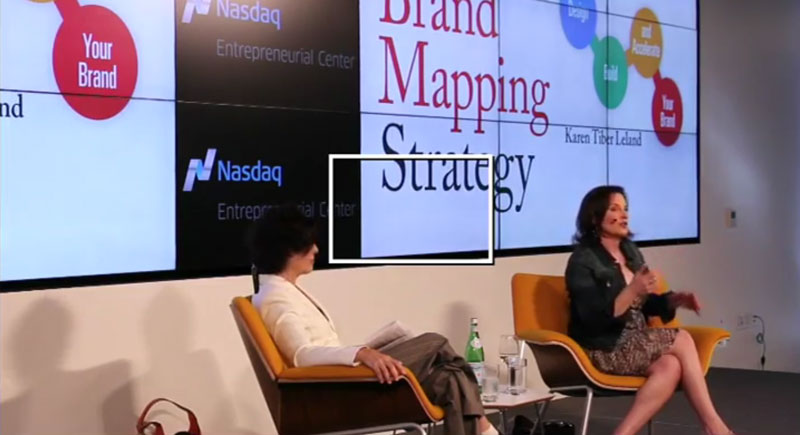
The Brand Mapping Strategy by Karen Leland gives excellent tips on how to be ready for the media and get the media to call you.
Let’s go back to what else might get media to call you that you could have ready and be ahead of your competitors or other people in your crowded field. You were talking about how crowded the Internet is right now. How can we stand out with our brand and get the media to call us when they’re maybe doing that search on Google? Or, when you responded to HARO or you responded to a query and they’re checking you out to make sure that they choose you.
Let’s talk about HARO for a minute, which is Help A Reporter Out. As you know, I have a whole series of online programs. One of them is literally about how you use HARO and other online sites to reach out to reporters and have them cover you. Again, as simple as these stuff may seem, so many people are doing it so badly and inappropriately and they’re missing the opportunity.
We’ll put that link up on BeAMediaDarling.com for this too. It’s a great resource.
The thing about HARO is that, you got to remember, if I’m a reporter, especially from any known paper or known entity or known media outlet.If I’m from Inc. Magazine and I put something out on HARO saying, “I’m looking for experts in time management to address how people can set goals for the New Year,” how many thousands of responses do you think I’m going to get within a five minute period?
A couple thousand.
Probably a couple thousand. One of the first things is, I always encourage people to put in the headline what [they are] actually they’re responding to. Remember, that reporter, that media person is also getting emails for other things. I always put in the headline, it would be, “Expert for time management.” So that the person knows what it is that they’re responding to. That’s one thing. It’s also, if you can sneak something in the headline very shortly about yourself that works, I think that’s great. I think the thing is, just the subject line is one of the first things that you have to do properly just in responding. So many people just don’t do that even well.
The other thing is, I always tell people, when I’m the media person and I put stuff up in HARO to interview people, if I get from somebody a block of text with no paragraphs, I am embarrassed to this but it’s really true, 9 out of 10 times, I won’t read it. I’ll just delete it. I can’t read a huge block of text. If it’s not separated into sentences or paragraphs that are easy for me to skim, it’s too much work and I’ll just delete it.
Most reporters I know have told me that’s the case. They will do the same. First thing is you have to make it easy for these people to read what you sent them. That’s number one.
Can I just say super quickly, that it should be the same on your website.
Absolutely.
Nobody wants to read that huge block. Just putting little headlines for each of your paragraphs so somebody could skim it and see if they want to read further.
Along those lines, one of the ways to skim is you want to put bullet points in that. You want to basically, you introduce yourself, you say why you’re writing and then why you think you’re the right person for their piece then put bullet point, bullet point, bullet point. If they’ve asked for something like tips, tip, tip or whatever information they’ve asked for. Your contact information and you’re done.
I’ll tell you, a lot of times I get those from PR people when I’m the reporter asking for information and the PR person will not give me the contact information for their client. I don’t want to call the PR person, to get the client. That’s ridiculous. I know they want to control it a lot of times, but you really have to say the name of the client and their contact information. Reporters just don’t have time. They need to be able to quickly get access to what they need access to.
If you give them one extra step, then they’re going to go to somebody who’s given them the ease of getting in contact with that person. It’s not just about your great content, it’s about the ease of which you deliver it to someone in the form that they’ve requested if you want to get the media to call you.
As soon as you are a pain in someone’s behind, you have just reduced your chances of them covering you by about 90%.
That’s a great point. What else do you look for? Because you’re on both sides of it since you write for Forbes.com and …
Entrepreneur.
Entrepreneur.com. Since you write both of them, you are also soliciting sources all the time. You’re really on both sides of the fence that way.
I think the other thing they look for is people who really are experts at what they are looking for. Not someone who’s stretching the point and not someone who’s trying to pivot their story. They know what they need and what they’re looking for. Nothing annoys them more than somebody who responds who isn’t really an expert or is trying to get them to pivot.
People have written to me, “I don’t know about that but you might be interested in this story.” No, because I asked for that. I asked for A, not for B. I will never use that person again because they’re on my bad list for having wasted my time.
I totally get it. Are there any other no-no’s that won’t get the media to call you?
Being long as opposed to short in terms of what you write the person, and being arrogant. I remember once, I actually have this as a slide that I show in my speeches when I give speeches on branding and marketing, I show this slide. I was once looking for a source on HARO and somebody wrote me back and they said, basically, I’m paraphrasing now, “But you better get in touch with me quickly because my new book just came out and it’s really a hot topic. I’m not going to be available for long.”
It took me less than a quarter of a second to delete that email. Reporters hate that. They hate that. They hate entitlement and arrogance. I don’t ever think it’s a good idea, but if you are Steve Jobs, you probably get a pass on entitlement and arrogance with the press. Unless you’re that level, you should cut the attitude.
Also, never pressure reporters like that, “You better hurry up and get in touch with me.”
No. They don’t care. There are a million sources they can use.
What’s something that people should do to get the media to call you? We’re talking about some of the biggest branding mistakes also that small businesses and entrepreneurs make that impact their relationship with the media. Are there other things that they do that are total no-no’s?
I think you know this from the work that you do. I think when people are not really clear about the points they want to make with the media then if they’re doing anything on radio or on camera, it really ends up being a problem.
For example, I never practice a speech. I never rehearse or learn a script when I’m going to be on radio or TV. But you can bet, I know my 5 talking points or 4 talking points or all the points that I want to make and the stories that I want to tell. They are in my head completely. Then I’m free to just be myself and be natural.
I think the lack of preparation and really understanding what their main points are is one of the big problems people have when they’re doing live media, like radio or television.
It’s about planning, preparing and practicing your sound bites so you can be free to be spontaneous.
Exactly.
You’re right. A lot of people don’t have those down. They can be spontaneous but they’re trying to remember what they’re points are and the interviews and are not going to be structured tightly to help you actually get business from your media interviews. That’s the difference.
For somebody like Karen, Karen’s obviously experienced doing media interviews so she’s got all of her points down. She knows exactly what she wants to speak about for each particular topic and how she can twist each topic and use points for different angles. That’s something else to be prepared for.
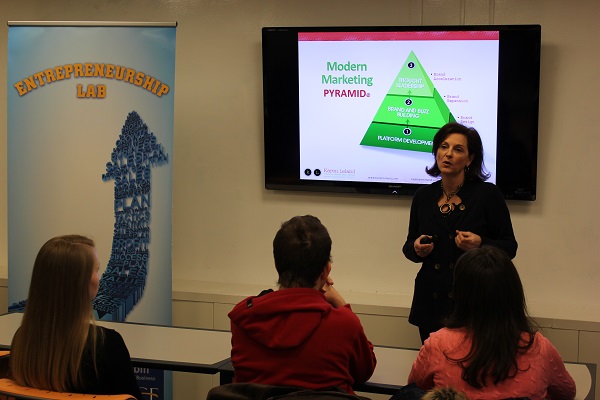
Knowing your talking points in and out will set you one step ahead when you get the media to call you to be their expert resource.
Have we covered all the biggest mistakes, biggest branding mistakes? That’s an interesting way to look at it. I wouldn’t have considered that branding but I think it is because that’s how you’re perceived live. Does that match your website and your social media, the feel, the tone?
I think it absolutely is branding. I would say the only other mistake I would highlight is that people tend to get this fear of missing out and they think they have to be doing everything. I’ve got to be on Instagram, I’ve got to be on Twitter, I’ve got to be doing videos, I’ve got to be podcasting, I’ve got to be going to conferences, I’ve got to be speaking, I’ve got to be blogging.
The truth is that what you have to do is pick one or two. People always think I’m nutty when I say that but it’s really true. One or two things and do them very, very, very well and very consistently. If you do that, one or two of those channels can be enough to build your brand.
You and I have talked about this, and I have the advantage of being a trained journalist and a writer. Writing is something I can do, it’s natural to me. I’ve basically built my business, my branding and marketing business on writing. On blogging, on writing articles, on writing books. That’s mostly the strategy that I’ve used.
In terms of social media, a blog was the biggest strategy that I used. My second strategy was speaking because the other thing I can do, as you know, Susan, is talk. No problem with that one.
The great thing is that you’ve deep dived into both of those. You have so much content on your blog and on your website. Obviously, with the nine books that you’ve written and then you’re always speaking at conferences all over the world. You’re getting clients that way but it’s also a way that you’re consistently talking about this topic.
I also blog for other people. I blog for Forbes, I blog for Entrepreneur, I blog for AllBusiness, I’ve written articles for lots and lots of other people. It was a way to get myself out there. As you know, I just recently started doing the Branding Blowout Podcast. I started podcasting because that’s just more talking.
Exactly. Which we both love to do.
Which we both love to do, which is probably why we’re friends. We both love to eat and talk. I think the point of this is that I think one of the biggest branding mistakes people make is this feel this pull in all these different directions and then they do a lot of stuff, and none of it very well. That’s to me, a huge branding mistake. As opposed to doing a deep dive on one or two branding tactics and really being awesome at those and excellent at those.
I’m totally in agreement with you. Go where you’re pulled. Like Karen said, it’s natural for her to speak and it’s natural for her to write and she’s really good at both of those things. Go where you’re pulled and the media will see that and it will get the media to call you.
My friend Andrea who we just had on, Andrea Scher who we’ve just had on as well, is a photographer. I know Karen’s a photographer too. Andrea uses Instagram. She posts at least one image a day because it’s a visual medium and she’s all about joy and photography and beauty. Those things are in sync with her brand. She’s doing photography naturally, every single day. She pops those up on Facebook. She’s also a writer. Her deep dives are Facebook, Instagram and blogging. She started her following with blogging. She’s a beautiful writer. She’s got a very devoted following. Her followers also follow her on those other two mediums for the visual content.
You know you can just do visual content. I always use as an example, my friend Dewitt Jones who’s a former National Geographic photographer. He has a visual blog called Celebrate What’s Right With The World. He was a former National Geographic photographer all over the world so you can imagine how good he is. He, once a week, posts a photo that he’s taken with a quote. I think in two years he’s built it up to something like 17,000 followers. It’s basically all visual content.
What is it called? You’ll pass us that link?
Sure. It’s called Celebrate What’s Right With The World. It’s free and it’s really beautiful and inspirational and wonderful. It’s a great example of using visual content alone to drive a brand.
Are there other ways to drive interest and get the media to call you besides … Obviously, since he’s a photographer, that is very natural for him. You can take a look at his feed and see what he’s done.
You don’t have to be a photographer to do this. I love to take pictures too. I don’t even have a good camera, I do it on my iPhone. I do love that. I love taking pictures. I haven’t been posting those much because it takes so long. I’m going to hire somebody to do that because I actually love taking pictures. If you don’t love part of the process, contract it out.
By the way, I just have to disagree with you. You said, “I don’t have a good camera. I take it on my iPhone.” First of all, the best camera is the camera you have with you. That’s the first thing. The other is that, the iPhone right now is 10, 12 megapixels. The iPhone is an extraordinary camera right now. I basically use my iPhone more than I use my Canon at this point. I know a lot of photographers, including Dewitt Jones, he uses other equipment as well and who consistently use their iPhone.
If you like taking photographs, the iPhone has become an extraordinary tool for taking photographs, for placing on Instagram. Especially with all the apps that there now for fooling round with the images after you’ve done them. There’s an amazing amount of stuff you can do. I think the iPhone is one of the best tools people do have for actually starting to brand in a visual sense. Because it’s always with them if you use an iPhone, or if you use a Galaxy, basically a camera phone.
What kinds of things can they do to use their iPhone to help brand them that would be attractive to the media? What kinds of things can someone put on their website or on their social media that would get the media to call you?
For example, you can use Periscope now which is an app that lets you take really short little videos and post them to Facebook. Anybody that’s got a phone camera can do that. That’s one thing. There’s also Facebook Live where people can do that. That’s one way people can use the camera. They can also use it to take pictures and then …
Sometimes I take a picture and the picture inspires me to write about something. I’ll say, it’s very personal, I’ll say, “I was walking down the street and I saw this, blah, blah, blah.” I’ll make it into some story about branding or some blog about branding.
I just think that the ability to make your own media today with cameras that are embedded, with the cameras, the videos, the recorders that are imbedded in phones and then to instantly be able to publish them is an extraordinary way to start to build your brand in a spontaneous way. You need a planned way, but that’s the more spontaneous way.
That’s great. That’s a great point too, that there is the whatever is in the moment kind of publicity, as long as it’s well thought out and curated as well as the thoughtful plan for your social media, including blogging or podcasting or blogging or whatever that is.
Are there certain kinds of images though that the media, would be more media-genic for people on their feeds? Not that I want people to start just doing that, but to be able to put it in the mix. You do things that pull you or that draw you or that interest you or that inspire you to write a blog and then you can put that on their blog post or whatever medium you’re using.
Are there certain things that the media might look for that they can either use or that attracts them or that says, “Wow, this is really interesting. This is an interesting person, I love their brand.”
Content wise, I think the answer to that is no, with two exceptions. You have to stay away from anything pornographic and you have to stay away from anything violent or illegal. Taking those three things out of the mix. I think other than those three things, anything really goes.
With this criteria, it has to be an interesting or well-taken or artistic photograph. It’s really the quality of the photograph or the interestingness of the photograph or what the photograph is communicating is what makes the difference, rather than it being a particular subject.
As you know from taking photographs and as I know from being a photographer and doing a lot of photography, every photographer, just like every artist, just like every writer, has their own voice. The more you develop your voice as a photographer, the more that your photographs will have a certain feel and look based on who you are. That is something that can start to also brand you because your photographs now have a voice. Just like your writing has a voice.
That’s a very good point by the way because I see some actually very well-known people’s Instagram feed that’s just a mess. I just think, “Wow, that’s so not in sync with what I saw in their brand or the quality of their brand.” Even though you’re taking photographs, what Karen is saying is that they still have to be of high quality, high visual quality or be interesting and beautiful.
Because I’ve seen some that I find shocking where I was like, “I really like the website but it looks nothing like the Instagram feed.” Their photographic ability or whatever they’re choosing is not in sync with what they’re representing. I like that you could have your own photographic style that is as distinctive as your writing style.
You can. That’s something I have to say, I give Dewitt Jones a lot of credit for teaching me that. I came to photography fairly late in life. I was a printer and a painter and I had done all that for a long time, 20 plus years. Dewitt asked me if I wanted to learn photography. I was like, “No, I suck at photography.” He’s like, “No, really. I’ll teach you.”
He did and I think he really did teach me how to find my own voice as a photographer. It’s not only given me a lot of joy but I think … In my new website that I’m doing, I’m actually having a photography section. Not because I’m looking or anyone to hire me as a photographer but because I think it adds to the brand of who I am to say, “This is the creative side of me,” because there is a voice to my photography.
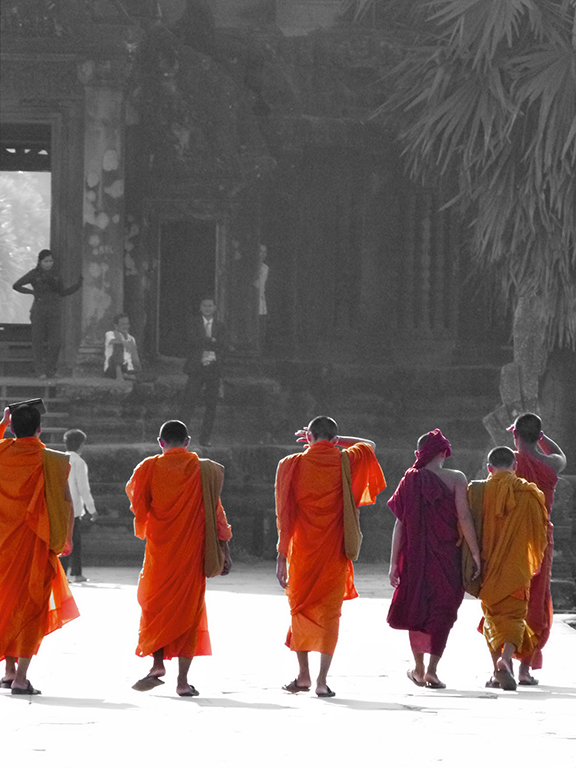
Showing your personal brand that blends with your business brand is another tactic to get the media to call you. Image from Karen’s photography site.
There is. I’ve seen some of your photographs from India and from elsewhere that are just extraordinary. Just extraordinary moments. They don’t have anything to do with branding in that sense, but it has to do with that you love to travel worldwide.
It has to do with the personal part of my brand rather than the business part of my brand.
Exactly. What are the best ways that business owners can create buzz for their brand and get media attention?
First of all, we talked a little bit about keywords. Keywords really are important. Again, I find that for all the yapping that goes on about keywords and search engine optimization, a lot of businesses do not know their keywords. It’s really pretty simple.
One of the first things is, you got to know what your keywords and your keyword phrases are. If let’s say you’ve got ten phrases that get searched, or five, doesn’t matter, or thirty. I have a silo of thirty words that I know get searched for what I do. I start at the top of the list and I do a piece of content with that keyword in it, based on that keyword. I go to the second one then I go to the third one. When I’m all the way to the bottom of the list, I start all over again at the top of the list.
You just keep cycling them, of your thirty in your silo?
I just keep cycling those thirty through using those keywords and phrases one at a time.
If somebody doesn’t know how to get their keyword phrases, because the Google keyword tool is now gone, is there another way that they can find what their keywords are? Looking at their competitors …
There are pieces of software that people can get. I can’t think of any from off the top of my head but you can Google them. There is software you can get that allow you to do that. SEMrush is one piece of software that people can use to do that. You can also hire people like me or other people who can help you figure that out. You can do it yourself by using some software or you can hire somebody. Those are the two basic ways to do it.
It’s not something so easy that you could do yourself.
It’s not that easy to do yourself unless you’re a branding and a marketing expert and you can really know how to do that research. It’s not the easiest thing to do for yourself.
Great. SEO words and have about thirty. That seems like a lot.
No, I said I have thirty. Anybody might have between five and thirty. I have thirty keyword phrases that I use. Remember, my keyword phrases include the whole spectrum of what I do. Thought leadership is one of my keyword phrases, personal branding is one of my keyword phrases, CEO branding is one of my phrases. I have a variety of things that I write about that all are part of the mix of what I do and what I offer. Depending on what you do, what you offer, it’s going to be between five and thirty keywords and keyword phrases. That’s one thing people have to, the place people have to start.
The other way to build brand and buzz is to really come up with a content marketing strategy. Again, it could be visual, it could be written, it could be podcasts, it could be video, doesn’t matter. What is the content marketing strategy you’re going to use to get out into the world what you do in a way that creates value for other people? Most businesses do not have that.
Therefore, they’re not going to show up in that first page of Google when media is searching for them?
They’re not going to show up in that first page of Google, but also when their clients go to look for them, there’s not really enough. If somebody does a search on you or me, a lot of stuff comes up that people can read that we’ve written, that has been written about us. People used to say to me, “Tell me about what you do.” Half the time now, when I say, “Do you want me to tell you what I do?” They go, “No, no. I already Googled you and looked it all up.”
They already know because there’s enough stuff that I’ve written and enough stuff written about me that’s out there now overtime that it’s created that brand. That’s why people need to have a content marketing strategy because otherwise they can’t really get stuff out there.
That’s super important when it comes to being able to get the media to call you. What do you tell the people who are not the writers in terms of a content marketing strategy? Does podcasting count as content?
Absolutely. No question about it. Podcasting completely counts.
It doesn’t have to be writing. It could be video.
It could be visual.
It could be visual and it could be podcasting. It could be any of the other media when we say content. Lots of times when you say content, people think words on a page.
No. Content is content. It could be visual, it could be podcasting, it could be video, it could be written. Dewitt is all pictures, so no, it could be anything that is content. It could be tweeting. I know one person, his whole entire content marketing strategy is just literally 140 character tweets. High quality, consistently done. He drives all his traffic to his website from his Twitter. He converts people on his website for purchasing.
Could you say who the person is so they can take a look?
I can’t.
Of course not. No worries. That would be great for people to be able to see what happens. I just want to emphasize one of the key things that you said, which is that driving people back to your website. A lot of times, when people are on Twitter, they don’t drive people back to their website. The whole point is to get people on your list.
The whole point is to get engaged with people so that you know who they are. I think the statistics are it takes something like an average of 6 points of contact before someone buys from you.
It’s actually now up to 10.
Up to 10.
It’s up to 10. It’s about 7 to 10 touches now. One of the things that we’re talking about is with your friend who, darn, you’re not allowed to say his name because now I’m curious.
Sorry. Non-disclosure agreements.
I got it. I love the idea that it’s just one strategy but he’s creating engagement. I didn’t mean to just say drive it back to your website like that. The point is that you’re taking somebody to your website to get more than the 140 characters because they’re intrigued by your content. That gives them the opportunity to get on a list and then to convert them to a sale if they’re the right kind of person who’s interested in whatever it is that he’s promoting.
Precisely.
That’s great. Was there anything that we haven’t covered that you wanted to touch on about how to get the media to call you?
No, I think we’ve covered a lot. I wanted to say, the book is out but also I have started this new podcast, The Branding Blowout. It’s going to be up very soon. I’m interviewing an interesting person every week about the topics of branding and marketing and leadership and business.
Wonderful. Karen’s podcast is the Branding Blowout. You could also reach her at SterlingMarketingGroup.com. On there, you’ll be able to see her products and particularly if you’re interested in how to get the media to call you and how to approach a reporter via HARO, that’s an excellent guide. Is your whole branding course available?
My whole branding course is available online.
I should say that it’s an entire course and it’s also available by module. If people don’t want to buy the whole course and they just want to know about the LinkedIn piece, they can just buy the LinkedIn piece or just buy the reporter piece. They can either buy the whole thing or they can just buy modules.
That’s terrific. If you do know what your content marketing strategy is and it’s just one of those, you can purchase just one module. If you don’t have those seven elements yet of the brand so you can get ready for the media and get the media to call you, it would be a great idea to go through the whole entire course. Karen and I have done some private branding things at Cavallo Point Spa.
By the pool, in our robes.
By the pool, in our robes, next to a roaring fire.
That’s where we do our branding sessions. I want to say, that’s actually a really important point that we didn’t point that we didn’t make today that we should. You’re one of the best at what you do in your industry and you’re an expert at branding and marketing. I’m really good at what I do in branding and marketing. Whenever you are trying to do some branding for yourself, you come to me. Whenever I’m trying to do some branding or marketing for myself, I come to you.
The point being that I think it’s super hard to do this stuff for yourself, even if you’re an expert at it. If you’re not an expert at it, it’s really hard to do this for yourself. I think people sometimes get into this mindset of, “I should be able to do this for myself,” when the reality is even the people that are experts, like you and I, we can’t even do it for ourselves. We have to go to someone like each other to help us. I think that’s a really important point to make.
It’s a totally important point. I hired a media coach for my book tour for Sell Yourself Without Selling Your Soul. I couldn’t do that myself. You and I do that exchange, that I media train you and you help me with branding. It’s really hard to discover your own genius in what you do. I think that to take a look and see what’s hard for you and hire people for that and do what’s easy for you, that works and go with that.
Absolutely, something like this, no, I could not do it for myself. Either sound bites or branding. That was really helpful to have our session by … I was going to say session by the sea, but session by the pool. Delicious food and fabulous things at Cavallo Point. Karen Leland, thank you so much for being our guest today. I can’t wait to actually read your book on how to get the media to call you, which I’m going to be getting in the next couple days.
You’re going to be getting it when we go to Cavallo Point next week.
I can’t wait. Thanks so much.
Thank you.
About Karen Leland
Karen Leland is the CEO of Sterling Marketing Group, which is a branding and marketing strategy and implementation firm, helping CEOs, businesses and teams develop stronger personal and business brands. Clients include AT&T, American Express, Marriot Hotels, Apple Computer, LinkedIn, and Twitter. She’s the bestselling author of nine books. She writes regularly for Entrepreneur.com and Forbes.com. The most recent book, is The Brand Mapping Strategy, Design, Build and Accelerate Your Brand. She’s spoken for Harvard, Stanford, YPO, the AMA and been interviewed on the Today’s Show, CNN, CNBC and Oprah. To reach her, go to SterlingMarketingGroup.com.
RESOURCES
Hire Karen for business or personal brand building
Hire Karen to speak to your organization
Purchase the whole branding course – or by module
Buy The Brand Mapping Strategy, Design, Build and Accelerate Your Brand
Take the quiz to see how strong your brand is
Hop on over to Karen’s Podcast
Wasabi Publicity Survey on how the media finds you and what they are looking for.
Are you enjoying the Podcast? Then I invite you to hop on over to iTunes to subscribe, rate + review it. Here’s a quick video on how to do a podcast review on iTunes. (It’s simple if you follow these directions). Note: It can take up to 24 hours to show up on my Podcast. You’re welcome to send this to anyone you think it would delight. May good fortune always follow you!
Want to know how to subscribe on your phone? Watch this video.
Want to be a guest on my Podcast? Jet me an email with your topic and a link to your bio here.
Send Susan a Voice Message!
Click below to send me your voice message with a question or topic you’d like to hear more about in my upcoming podcasts! I will answer the most pressing and popular ones in a future episode. (I’ll mention your first name ONLY to protect your privacy.)
Check out our PR and Media Training Workshop to Jumpstart your Publicity
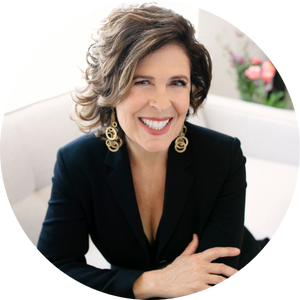
Like what you read? Share it!
WE THOUGHT YOU’D ALSO LIKE THESE EPISODES

